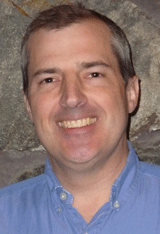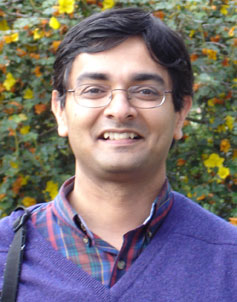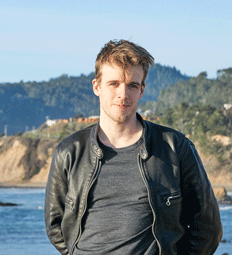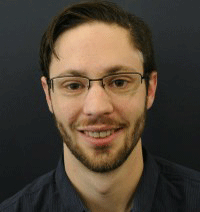
|
A Message from the Director, Prof. Jian-Ping Wang
Welcome everyone, to the C-SPIN Quarterly Newsletter. First of all, congratulations to Caroline Ross and Geoff Beach for their new article in Nature Materials on the first instance of current-induced switching in a magnetic insulator. It’s a truly exciting result. See our news feed for more details.
More congratulations are due to Sachin Sapatnekar, who was recently named a 2016 fellow of the Association for Computing Machinery, and Steve Koester, who was recently named a fellow of IEEE. As someone who has seen their consistently excellent work in and out of C-SPIN, I am not surprised by these honors.
Second, please note that Marie Rahne, our hard-working Center Manager, will be on maternity leave for the next three months. Most of Marie’s duties will be filled by C-SPIN executive assistant Sylvia Hill. You can contact Mike Lotti about news and other communications items.
Third, in the final year of C-SPIN, I thought it would be good to both look back on our progress and look ahead – as best we can – to see how our work may bear fruit in industry and academia. So I instructed Mike Lotti, our communications coordinator, to write five articles for the final three newsletters, with hopes that we can have something like a history of the Center by the time of our final Annual Review in September. Because of the limited space and time, he only could pick up some highlights – I’ll trust you to dig out more from previous C-SPIN newsletters. In this issue, Lotti recounts the beginning of C-SPIN (which he was a part of) and the interesting journey of Theme 1.
Looking Back, Looking Ahead: The Birth of C-SPIN
Major scientific research centers don’t happen by accident, and they don’t happen easily. They require vision, administrative and organizational expertise, plenty of institutional support, and, of course, a huge amount of high-level scientific expertise. On top of all that, they require cooperation and a lot of money – as in tens of millions of dollars.
To understand how C-SPIN came to be, it’s best to start with the vision and the money. And the vision starts with Jian-Ping Wang and his team.
Growth of Non-volatile Spintronics Research
Magnetic semiconductors have been the mainstream for spintronics research and its application for logic since 1990. Unfortunately, its operation demands low temperatures and so couldn’t support CPUs in PCs, laptops or mobile devices. At a 2004 symposium organized by the University of Alabama on magnetic tunnel junctions (MTJs), Jian-Ping Wang gave a talk on the potential advantages of non-volatile spintronic logic and presented the world’s first experimental demonstration of an MTJ array. Using MTJs for read sensors in hard disk drives and MRAM was well underway by that time, but Wang felt like he was the only one to apply the same principles to the other main parts of a computer. “I pictured people in resource-poor or resource-unstable settings still being able to use computers and maybe even power them up with simple solar cells,” Wang remembers. “I also tried to articulate all the advantages of non-volatile systems, including non-volatile memory.” Read More.
Looking Back, Looking Ahead: Theme 1
“Lots of promising research, not much organization to fulfill that promise.” That’s Jian-Ping Wang’s characterization of spintronics research prior to C-SPIN. Regarding Theme 1, that meant that a few things were well-known, but it was unclear if (and when) substantial breakthroughs would move the field toward viable spintronic memory and logic devices.
Everyone knew that perpendicular magnetic anisotropy (PMA) materials were essential to robust spintronic computing, for example, but only a few good PMA materials had been characterized by 2012, and no one knew how they would perform when interfacing with other materials – or even if they could survive high-temperature annealing and then function well at room temperature.
Another example: it was clear that a device like a magnetic tunnel junction (MTJ) would be necessary, but no one knew how such devices would be used (replacements for FETs? translators of spin information to CMOS systems?) or if they could be small enough to compete with CMOS devices. Read More.
C-SPIN Associate Director, Prof. Steven Koester Named IEEE Fellow
 University of Minnesota Prof. Steven Koester has been named an IEEE Fellow effective January 2017. He is cited by the IEEE for “contributions to group-IV electronic and photonic devices.” Prof. Koester’s research focuses on novel electronic, photonic and sensing device concepts with an emphasis on graphene and other 2D materials. He has authored or co-authored over 200 technical publications, conference presentations, and book chapters, and holds 65 United States patents. Prof. Koester is also an associate editor for IEEE Electron Device Letters. Read More. University of Minnesota Prof. Steven Koester has been named an IEEE Fellow effective January 2017. He is cited by the IEEE for “contributions to group-IV electronic and photonic devices.” Prof. Koester’s research focuses on novel electronic, photonic and sensing device concepts with an emphasis on graphene and other 2D materials. He has authored or co-authored over 200 technical publications, conference presentations, and book chapters, and holds 65 United States patents. Prof. Koester is also an associate editor for IEEE Electron Device Letters. Read More.
C-SPIN PI, Prof. Sachin Sapatnekar Named ACM Fellow
 The Association for Computing Machinery has named University of Minnesota Prof. Sachin Sapatnekar as one of its 2016 ACM Fellows for “contributions to the enhancement of performance and reliability in integrated circuits.” Prof. Sapatnekar’s research focuses on computer-aided design (CAD) of VLSI systems. Some of the specific problems that his research team have worked on recently include spintronics-based design, thermal analysis, reliability, timing analysis and optimization, power grid analysis, and 3D integration. Read More. The Association for Computing Machinery has named University of Minnesota Prof. Sachin Sapatnekar as one of its 2016 ACM Fellows for “contributions to the enhancement of performance and reliability in integrated circuits.” Prof. Sapatnekar’s research focuses on computer-aided design (CAD) of VLSI systems. Some of the specific problems that his research team have worked on recently include spintronics-based design, thermal analysis, reliability, timing analysis and optimization, power grid analysis, and 3D integration. Read More.
Post-Doc and Student Profiles
Andy Quindeau, Postdoctoral Researcher at Massachusetts Institute of Technology
 My work involves the fabrication and characterization of perpendicularly magnetized ferromagnetic insulators (here Tm3Fe5O12) that are notoriously difficult to synthesize (Theme 1). I collaborate with C-SPIN affiliates to produce spintronic devices that use spin currents to switch these ferromagnets. Ultimately, the implementation of perpendicular ferromagnetic insulators will be better than metallic devices in terms of switching efficiency and could potentially lead to dissipationless current transport in conjunction with topological insulators. Read More. My work involves the fabrication and characterization of perpendicularly magnetized ferromagnetic insulators (here Tm3Fe5O12) that are notoriously difficult to synthesize (Theme 1). I collaborate with C-SPIN affiliates to produce spintronic devices that use spin currents to switch these ferromagnets. Ultimately, the implementation of perpendicular ferromagnetic insulators will be better than metallic devices in terms of switching efficiency and could potentially lead to dissipationless current transport in conjunction with topological insulators. Read More.
James Kally, Ph.D. Candidate at Penn State University

I am currently working within Theme 2 to utilize topological insulators as spin injectors and spin channels. Topological insulators have the exciting property of conducting surface states where the spin of the electron is “locked” with its momentum. Since the direction of the current defines the electron’s spin orientation in a topological insulator, they could be very efficient for switching a magnet. In particular, I work with topological insulators Bi2Se3 and (Bi,Sb)2Te3, which I grow by molecular beam epitaxy on a variety of substrates in Prof. Nitin Samarth’s lab at Penn State. Read More.
To unsubscribe, respond to this email with the word "unsubscribe" in the subject of the email.
University of Minnesota's mass email privacy statement |